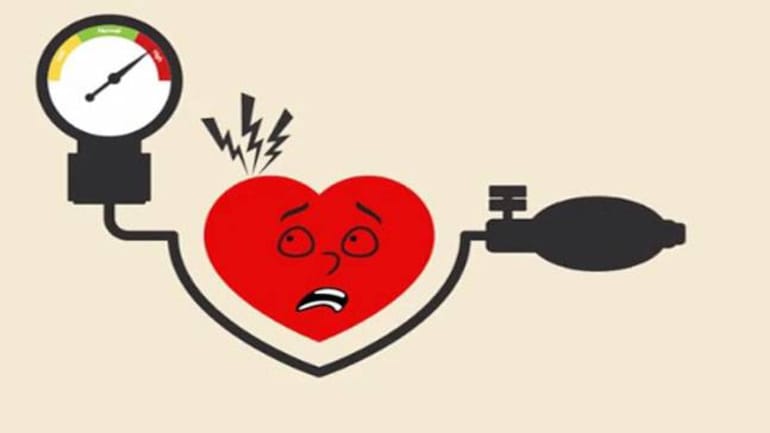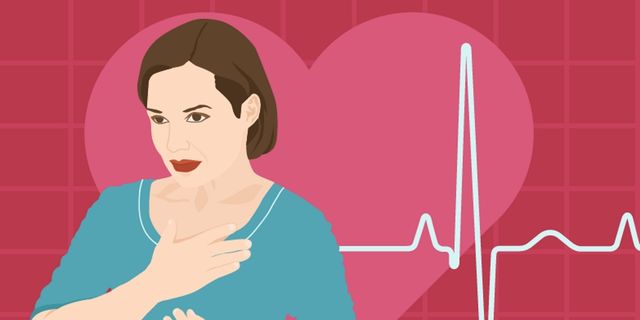Hypertension, also known as high blood pressure (BP), is a condition in which the force of the blood is very high against the vessels. It is a major risk factor for cardiovascular diseases (CVD), and a high BP has been demonstrated in approximately 69 percent of people who have a first heart attack, 77 percent of those who have a first stroke, and 74 percent of those who have heart failure.
Hypertension is a major health risk factor which is gendered, where women are often misdiagnosed by calling it “stress” or “menopause-related” discomfort. This can lead to severe health related consequences like heart diseases, which may even result in death.
Though there may be no significant symptoms, according to TotalHealth, some major manifestations of hypertension, especially in women include: Pre-eclampsia (high BP during pregnancy) which is linked with a 4x increase in heart failure, hypertension, and a doubled risk of stroke, early natural menopause before the age of 40 can also lead to cardiovascular diseases, where each year is associated with a 3 percent raised risk, rheumatoid arthritis, and lupus that are characterised as autoimmune inflammatory conditions are diagnosed more in women men and increase cardiovascular risk around menopause.
Additionally, if during pregnancy a woman develops high blood pressure, it is more likely that she will have hypertension as she enters menopause. Professor Maas, director of the Women’s Cardiac Health Programme, Radboud University Medical Centre, Nijmegen, the Netherlands states, “If blood pressure is not addressed when women are in their 40s or 50s, they will have problems in their 70s when hypertension is more difficult to treat.”
According to TotalHealth, while Hormone Replacement Therapy (HRT) in women over 45 years of age helps in easing night sweats and hot flashes, as a result of HRT leading to a high risk of blood clots, assessment of cardiovascular risk factors before initiation is recommended. Considering HRT, it is necessary to also consider care for transgender individuals. “These women need hormone therapy for the rest of their lives and the risk of blood clots increases over time”, explains Professor Maas.
The prevalence of hypertension is generally slightly higher in men, than in women. The National Health and Nutrition Examination Survey (NHANES) data show until 45 years of age that more men than women have hypertension. The percentage of this condition then becomes similar in men and women from 45 to 64 years of age. Post this, the BP rates are higher in women than in men. In the near future, however, there has been a prediction that the existence of hypertension will be more in women, than it will be in men. That is, in men, the prevalence of hypertension is estimated to increase by 9 percent, whereas for women, it is likely to increase by 13 percent between the years 2000-2025

The gendered nature of hypertension
Normotensive women have an approximately 5 years larger life expectancy than hypertensive women compared with normotensive women at 50 years of age. Sudden cardiac death is most common in post-menopausal women, who have the greatest population burden of sudden cardiac death, thus comprising 13 percent of all deaths and one-half of all coronary deaths.
Hypertension in a data of more than 160,000 postmenopausal women ahs been identified as a major independent risk factor for sudden cardiac deaths, according to a report from the Women’s Health Initiative (WHI).
The prevalence of hypertension is generally slightly higher in men than in women. The National Health and Nutrition Examination Survey (NHANES) data show until 45 years of age that more men than women have hypertension. The percentage of this condition then becomes similar in men and women from 45 to 64 years of age.
Post this, the BP rates are higher in women than in men. Shortly, however, there has been a prediction that the existence of hypertension will be more in women than it will be in men. That is, in men, the prevalence of hypertension is estimated to increase by 9 percent, whereas for women, it is likely to increase by 13 percent between the years 2000-2025. According to the figure given below, 483.5 million women had hypertension in 2000, and this is predicted to increase to 793.3 million in 2025.
Also read: Premenstrual Dysphoric Disorder: Unpacking The Basics Of A Severe, Stressful Condition
Women and heart diseases
Caroline Criado Perez, a feminist campaigner, published a book Invisible Women: Data Bias in a World Designed for Men, in which she addresses a study from the Leeds University which states that women in the U.K are 50 percent more likely to be misdiagnosed after a heart attack.
An increase in the awareness of the gendered nature of hypertension will also make women more cognisant of the signs and symptoms that they are facing, which they will in turn, effectively convey to their doctors. Full medical histories thus conveyed can help in better diagnoses and prevent heart failure and other related diseases
She says, “The fact that we are still misdiagnosing these women is shocking. We call female heart attack symptoms atypical, but they are actually very typical — for women. And we’ve known about the female symptoms [like stomach pain, breathlessness, nausea, and fatigue] for a long time now, because cardiovascular research is the field where the most work has been done on sex differences.”
As compared to hypertensive men, hypertension in women leads to more arterial stiffness, heart failure with preserved ejection fraction (HFpEF), atrial fibrillation, and dementia at an older age. Due to the smaller diameter of their arterial system, aortic aneurysms tend to rupture at a smaller size. It remains to be elucidated whether the threshold for normal BP should be lower in women than in men. It has been found that only 50 percent of hypertensive patients are treated appropriately, and this affects more women than men.
/IlloDot_HighBloodPressure-62a0990f21154e1ba775ade55f0e395a.png)
Why do we need more awareness?
As the awareness regarding hypertension in women and related problems increases, the efforts have resulted in positive outcomes. Between 1997 and 2012, the rate of awareness of CVD as the leading cause of death among women in the U.S nearly doubled (56 percent vs. 30 percent with a significance of p<0.001). It is worth noting that race plays an essential role in the degree of awareness among women, that is to say, it has been observed that gaps persist between minorities compared with White women such that the level of awareness in Black and Hispanic women in 2012 is similar to that of White women in 1997.
Such intersectionalities affect the diagnosis and care for hypertension in women in India as well. Hypertension is seldom taken seriously in women, owing to gender roles, the social expectation that women must suffer in silence, and the reluctance to listen to women’s health related complaints.
An increase in the awareness of the gendered nature of hypertension will also make women more cognisant of the signs and symptoms that they are facing, which they will in turn, effectively convey to their doctors. Full medical histories thus conveyed can help in better diagnoses and prevent heart failure and other related diseases.
This is not to say that the responsibility of this issue lies in the hands of patients only. Ultimately, better communication between disciplines such as cardiology, endocrinology and gynaecology is vital – as is listening to patients.
Also read: Arthritis And Gender Roles: Unpacking The Relationship Between Joint Pain And Gender
Featured Image Source: Prevention.com
About the author(s)
Meghna(she/her) is a humanities student from St. Xavier's College, Mumbai who is fond of everything sociology and psychology. She loves animals, reading and art




